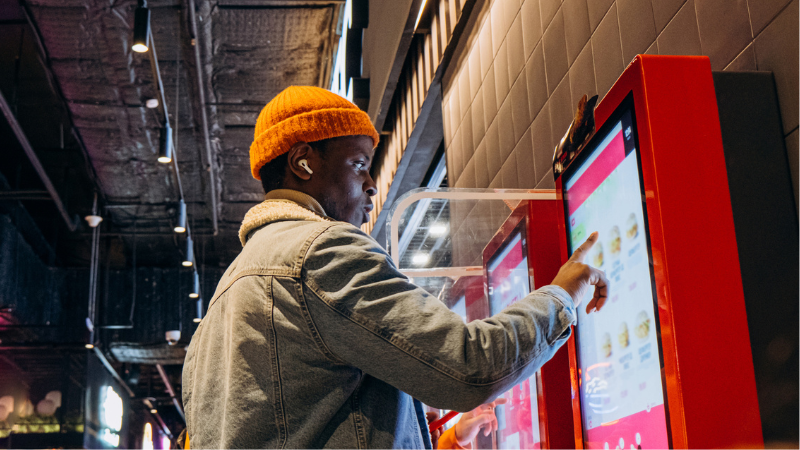
CHICAGO, May 1, 2025 — Early measures of economic activity during the first quarter of 2025 show President Trump’s tariffs have dramatically influenced consumer spending on food away from home (FAFH) even without the controversial surcharges being fully in effect.
Public FAFH companies reporting their first quarter results this week all cited a unique level of consumer apprehension and uncertainty about the impact of the duties, the first wave of which was not adopted until the fifth day of Q2.
The prospect of prices rising appreciably because of the import duties prompted what Yum Brands CEO David Gibbs termed a “re-prioritizing of spending” by the public.
Executives of other foodservice companies contended that consumers put money aside or accelerated purchases of some items in anticipation of prices soaring after the next round of import duties is imposed. Trump has set July as the trigger point.
The U.S. Department of Commerce said imports spiked by 41.3% between January 1 and March 31, depressing American production of comparable goods—the exact opposite of what Trump says is the aim of the tariffs. With the decline in domestic production, the U.S. gross domestic product (GDP) for the quarter fell 0.3%, compared with a gain of 2.4% during the last three months of 2024.
A second consecutive quarter of declining GDP would officially signal the U.S. is in a recession, but many economists have said that’s far from a certainty. The all-important gauge of economic activity could turn positive again once the glut of first-quarter imports abates, they explain.
Not all the impact has been negative for the public foodservice companies that posted their Q1 results this week. Gibbs, for instance, said consumers’ worries about their near-term economic prospects figured into the “staggering” 9% increase in same-store sales for Yum’s biggest restaurant brand, Taco Bell.
“It is an environment that favors Taco Bell,” said Gibbs. “The value we offer really stands out in this market.”
Wingstop, the usually high-flying rival of Yum’s KFC chain, also felt an uplift from the spike in consumer uncertainty, according to CEO Michael Skipworth. Because of the “elevated anxiety levels,” he told financial analysts, “brand love is at an all-time high.” The franchised chain maintained its 21-year streak of positive same-store sales, albeit with a scant 0.5% uptick. In each of the prior two years, Q1 comps rose by more than 20%, Skipworth said.
A combination of brand affinity and perceived value seemed to figure into the head-turning performance during the quarter of Chili’s, Brinker International’s grill-and-bar concept. The chain reported a same-store sales gain of 31% for the last three months of 2024, a gain seldom if ever seen by a brand of Chili’s scale. But it eclipsed that benchmark during the first quarter of 2025, posting a 31.6% leap in comparable sales.
The driver was a 21% gain in customer counts, according to Brinker CEO Kevin Hochman.
Few companies in the FAFH industry came close to generating Q1 results of that magnitude. McDonald’s, for instance, revealed that domestic same-store sales fell 3.6% during Q1, the biggest decline in comparable sales since the first year of the pandemic.
Sysco reported a 2% decline in its U.S. sales and a 5.6% slide in net income, to $401 million. It attributed the decreases to slumping restaurant traffic, which it tied to consumer uncertainty, the wildfires in southern California, and bad weather in many areas of the country.
“Consumer confidence has been shaken by the recent negotiations in trade policies,” CEO Kevin Hourican remarked to financial analysts.
In particular, “national restaurants had a tough quarter,” Hourican said, using the distribution giant’s label for the units of big chains.
Independent restaurants, or what Sysco calls its local business, also felt the ill effects, the CEO said.
The area that held steady for Sysco despite the economic uncertainty was the so-called onsite market, or what some call the noncommercial sector. The foodservice facilities of educational facilities, healthcare centers and business-and-industry settings were particularly resilient, Hourican said.
Domino’s reported a 0.5% decline in same-store sales and revealed that it had eliminated an undisclosed number of corporate positions during the quarter.
A main rival, Yum’s Pizza Hut brand, posted a 2% decline in comparable sales.
Companies outside the FAFH sector seemed even more rattled by consumer uncertainty. About 40 public concerns have reduced or suspended the broad-stroke financial guidance they usually provide to shareholders and analysts, according to Reuters.
Both Sysco and Brinker indicated that Trump’s tariffs wouldn’t be a problem if it weren’t for their influence on consumer confidence and spending habits.
“Sysco purchases greater than 90% of our products within each country where we operate. As a result, our tariff exposure is much less than most industries,” said Hourican. In addition, the company plans to “work with our customers to find menu alternatives” if they feel a squeeze in supply or price.
“We have thought about it a lot,” Mike Ware, Brinker’s CFO, said of the tariffs. “Eighty percent of our supply chain is sourced domestically.” Plus, “we have flexibility within our supply chain.
“We do think we can absorb any tariffs that come our way,” Ware remarked.
As Managing Editor for IFMA The Food Away from Home Association, Romeo is responsible for generating the group's news and feature content. He brings more than 40 years of experience in covering restaurants to the position.